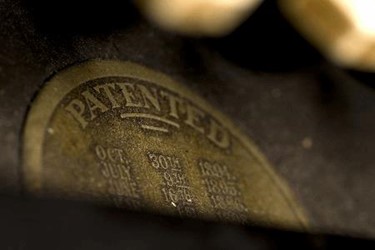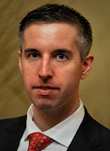Patentable Subject Matter Barriers For Biosimilars — And How To Overcome Them
By Nicolas Arkells, CEO, Manticore Consulting Group

Patents are the most important requirement for successful biologic commercialization, yet stakeholders often have little understanding of the unique obstacles encountered in this field, especially for biosimilars. Biologics may treat less than 2 percent of the U.S. population, but they account for 38 percent of all U.S. prescribed drug spending.1 In a RAND Corporation study, it was estimated that from 2017 to 2026, biosimilars will reduce the direct cost of biologics by $54 billion, approximately 3 percent of the estimated biologic spending over that period.1 Given the inevitable patent litigation resulting from every approved biosimilar in the U.S., along with more than 60 biosimilars estimated to be marketed by 2022, a deeper understanding of these major patent barriers is warranted.2,3
U.S. Patent Law Origin
The United States federal government has authority over all U.S. patents, as they are specifically referenced in the Constitution as a means of promoting the progress of science and the useful arts.4 The exact scope of this is heavily debated; however, it is clearly intended to give patents a level of protection that supersedes that of federal statute, as they draw authority directly from the main body of the Constitution.
Valid Subject Matter Requirements For A Biologic/Biosimilar
For a biologic to be considered valid “subject matter” within the scope of a utility patent (the type most relevant to biologics), it must be useful, novel, and nonobvious.5 The invention must also be sufficiently disclosed in its application to allow a person of ordinary skill in the art of the patent subject matter to recreate the invention without undue experimentation.6 Per 35 U.S.C. §101, to be eligible for a utility patent, an invention or discovery must be of a new and useful process, machine, manufacture, composition of matter, or any new and useful improvement. Patents are available not just for the compound, but also for the machine used to make the product, the manufacturing process itself, and potentially any improvements on the process or compound.5
Since at least the 1980s, the Supreme Court has held, in Diamond v. Chakrabarty, biotechnology as it relates to living organisms is valid patent subject matter, as patents are specifically intended to “protect anything man-made under the sun” with only minor limitations.7 The Supreme Court clarified these limitations in Association for Molecular Pathology v. Myriad Genetics, Inc., stating that though organisms could be acceptable subject matter, something occurring naturally, without alteration, was not valid.8 Subject matter that is generally not considered valid under section 101 and/or by the Supreme Court is typically laws of nature, physical phenomena, and abstract ideas.7 Aside from that short list of invalid subject matter, there are two categorical bans on patentability related to either weaponizing atomic and/or nuclear material, along with the vague provision of the America Invents Act (AIA) barring patents pertaining to human organisms.9 Other than these two items, the United States will generally accept patents on anything, since we do not share the European Union’s morality clause, which allows a prohibition of patented material based on philosophical precepts of what is “immoral” to patent.10
Infringement Overview
A patent is not a tangible property right on the invention itself; instead, it is only a right to keep others from selling, importing, making, or remanufacturing it. One of the earliest known western patents from 1421 Florence describes exclusivity rights best: “That no person alive…shall dare or presume, within three years…a machine, ship, or other instrument…further that any such new or newly shaped machine etc. shall be burned.”11 This is basically a patent at its core -- a right to exclude others, if necessary with the assistance of government authority. However, should someone infringe on a patentee’s rights in the 21st century, we no longer set fire to the infringing material, but there are remedies available that achieve similar results. Patent infringement is a “strict liability offense,” meaning proof of intent is unnecessary; however, the patent owner still has the burden of proving infringement occurred. Proving infringement can be very expensive and complicated; further, it risks exposing the patent owner’s claims to attack. For example, in Tris Pharma, Inc. v. Actavis Labs, Pfizer lost most of its patent’s claims when it tried to enforce its patent, because the court found the claims to be obvious, making them void as invalid subject matter.12
Patent Barriers For Biologics/Biosimilars With Human Derived Components
The AIA, which was signed into law in 2011, creates a serious barrier for many biologics/biosimilars seeking patent approval because some biologics use components of or derived from human cells.9 The AIA imposes a categorical ban on human organisms: “no patent may issue on a claim directed to or encompassing a human organism.”9
Despite the statutes and case law, the USPTO has seen fit to grant the highly controversial Wisconsin Alumni Research Foundation (WARF) patents.15 These were a series of three patents on embryonic human stem cells themselves and processes involving their application. However, these were filed in 2001, and the legislative history and specific provision in the AIA forbidding these claims is not retroactive.15 The pre-AIA patents may remain valid; however, the legislative history surrounding the AIA prohibition on human organisms indicates it is directly targeted at this type of subject matter. The legislative history states: “This amendment and USPTO policy reflect a common-sense understanding that no member of the human species is an invention, or property to be licensed for financial gain.”15 Further, the legislative commentary also says: “Patents on human organisms commodify life and allow profiteers to financially gain from the biology and life of another human person.”16 The EU has also struck down similar patents under its morality clause.
How To Out-Maneuver Subject Matter Restrictions
To out-maneuver restrictions on human organisms and/or other invalid components, some biologic inventors have instead elected to either not address the invalid matter in their patent claims or to patent a process applying the invalid content.13 The tactic of using an application of the process rather than the actual invention is not always sufficient to survive challenges. For example, this approach failed in Mayo Collaborative Services v. Prometheus Laboratories, Inc.13 In this case, the Supreme Court found in addition to not containing any natural components in its subject matter, the patent cannot avoid this requirement by “citing specific dosages, well known ideas, routine activities, conventional activities of researchers in the field, or anything appearing to be a patent thrown on top of a scientific law.”13 This ruling is very important for biologic/biosimilar patents, which may in some cases be process patents attempting to do what the Supreme Court has forbidden, especially if they involve human components.
In Ariosa Diagnostics, Inc. v. Sequenom, Inc., the court created a more restrictive framework to address these natural process combination patents.14 First, the court will look at whether the claims at issue are directed toward invalid patent subject matter. Second, if any claims are directed toward invalid subject matter, it will look at the claims both individually and in combination to see if they somehow transform the claim into valid subject matter, with sufficient ingenuity to amount to an “inventive concept.”14 This creates a term of art that is very vague and not uniformly applied. At present, most patentees try not to include human subject matter in their claims; instead, they try to focus on the Mayo criteria to basically draft around this human organism paradox.13
Conclusion
Absent the legislative reform needed to define specifically what Congress considers a “human organism,” as there is currently no agreed-upon legal definition, the patent process is likely to pose many unique challenges for biosimilar manufacturers. This is problematic because if a patent is not carefully drafted to address this possible uncertainty, it may result in an expensive product without commercial viability. At present, this means a biosimilar manufacturer will have to demonstrate substantial effort was done to transform a natural state of matter in a way that meets the criteria set forth in case law. Further, the categorical ban on human organisms has been interpreted inconsistently by courts, as it has sometimes been construed broadly and at other times narrowly, posing an additional hurdle for biosimilars synthesized from human material. Unfortunately, the only real means of addressing these issues at present is to obtain process patents on the therapeutic applications of the biosimilar.
References:
- Andrew Mulcahy et al, Biosimilar Cost Savings in the United States, RAND Corporation, 2017.
- Arkells N, Chopra A, Chopra I. Biosimilar Regulatory Policies Issues and Implications: Where Are We Headed? 23rd Annual International Meeting of the International Society for Pharmacoeconomics and Outcomes Research, Baltimore, MD, United States, 2018.
- Chopra I, Arkells N, Chopra A. Biosimilars: Barriers and Opportunities to Market Access in the United States. 23rd Annual International Meeting of the International Society for Pharmacoeconomics and Outcomes Research, Baltimore, MD, United States, 2018.
- U.S. Const. art. I, § 8, cl. 8.
- 35 U.S.C. § 101 (2017).
- Amanda Murphy et al, Impact of America Invents Act on Biotech Intellectual Property, Cold Spring Harbor Perspectives in Medicine, Sept. 5, 2015, DOI:10.1101/cshperspect.a020784.
- Diamond v. Chakrabarty, 447 U.S. 2204 (1980).
- Association for Molecular Pathology v. Myriad Genetics, Inc., 133 U.S. 2107 (2013).
- Inventions Patentable, 35 U.S.C. § 33(a) (2017); Leahy-Smith America Invents Act, 35 U.S.C. Pub. L. No. 112-29, (approved September 16, 2011).
- Rodney Ho, Growth in Biosimilar (Complex Injectable Drug Formulation) Products Within Evolving Collaborative Regulatory Interagency (FDA, FTC, and DOJ) Practices and Enforcement, HHS Public Access, Nov. 19, 2016 DOI: 10.1016/j.xphs.2016.10.011.
- Scott Kieff et al, Principles of Patent Law, 9-10, (6th ed. 2013).
- Tris Pharma, Inc. v. Actavis Labs. FL, Inc., 2017 U.S. Dist. LEXIS 143299.
- Mayo Collaborative Servs. v. Prometheus Labs., Inc., 566 U.S. 1290 (2012).
- Ariosa Diagnostics, Inc. v. Sequenom, Inc., 788 F.3d 1371 (Fed. Cir. 2015), (cert. denied) 136 S. Ct. 2511, 195 L. Ed. 2d 841 (2016).
- Brandon Smith, the Patentability of Human Embryonic Stem Cells in Light of Myriad, 96 J. Pat. & Trademark Off. Soc'y 112, 116 (2014).
- Tun-Jen Chiang, Competing Visions of Patentable Subject Matter, 82 Geo. Wash. L. Rev. 1858, 1873 (2014).
About The Author:
 Nicolas Arkells is the CEO at Manticore Consulting Group, a global health economics and outcomes consulting firm. He has over 15 years of leadership experience ensuring organizational commitment to statistical analysis and implementation. His law and science juris doctorate concentrated on intellectual property, which encouraged his research in biotechnology, market access, policy, and patent law. His MBA focused on the application of analytics to provide solutions to real-world problems in the healthcare industry. He is certified in medical devices and pharmaceuticals by the Regulatory Affairs Professionals Society, Lean Six Sigma black belt trained in the healthcare industry, agile certified as a PSM and PSPO, and certified in global human capital through Columbia University. He has been recognized for excellence in legal research, leadership, alternative dispute resolution and as a US biosimilar policy expert. You can reach him via email or connect with him on LinkedIn.
Nicolas Arkells is the CEO at Manticore Consulting Group, a global health economics and outcomes consulting firm. He has over 15 years of leadership experience ensuring organizational commitment to statistical analysis and implementation. His law and science juris doctorate concentrated on intellectual property, which encouraged his research in biotechnology, market access, policy, and patent law. His MBA focused on the application of analytics to provide solutions to real-world problems in the healthcare industry. He is certified in medical devices and pharmaceuticals by the Regulatory Affairs Professionals Society, Lean Six Sigma black belt trained in the healthcare industry, agile certified as a PSM and PSPO, and certified in global human capital through Columbia University. He has been recognized for excellence in legal research, leadership, alternative dispute resolution and as a US biosimilar policy expert. You can reach him via email or connect with him on LinkedIn.
